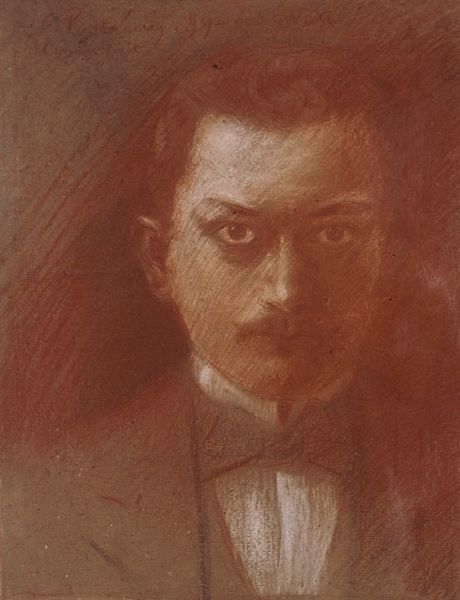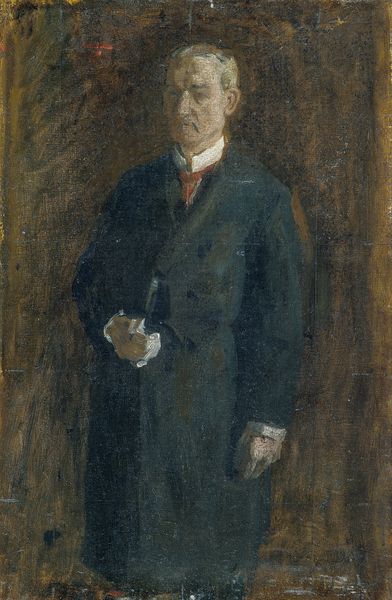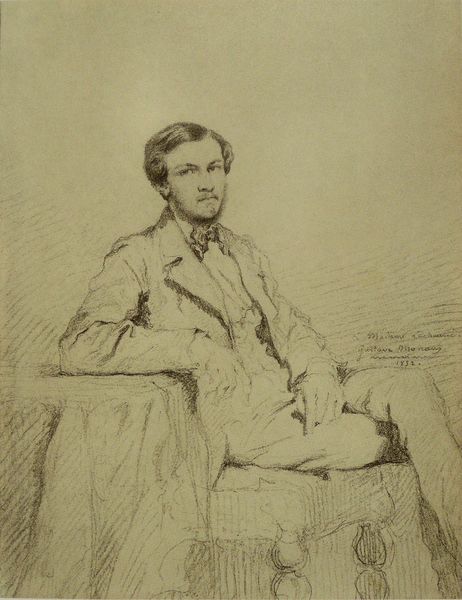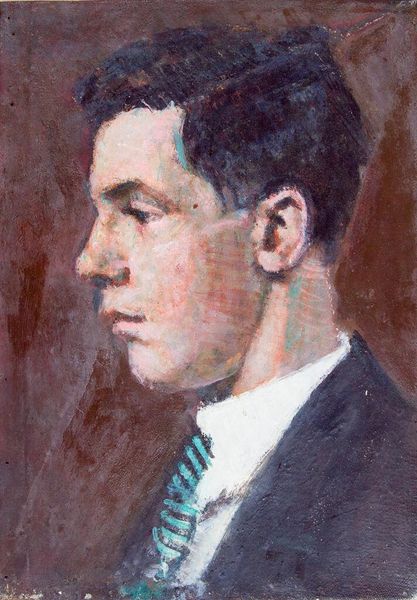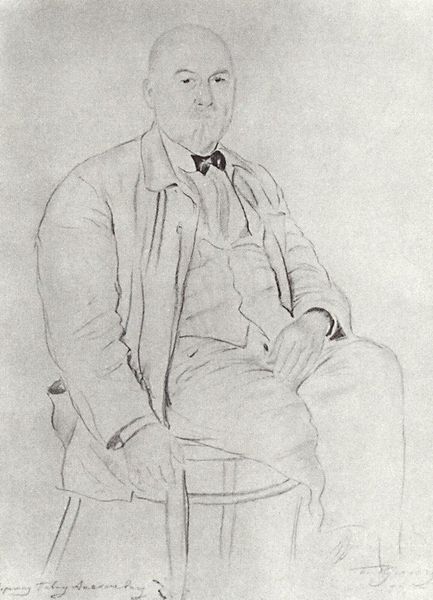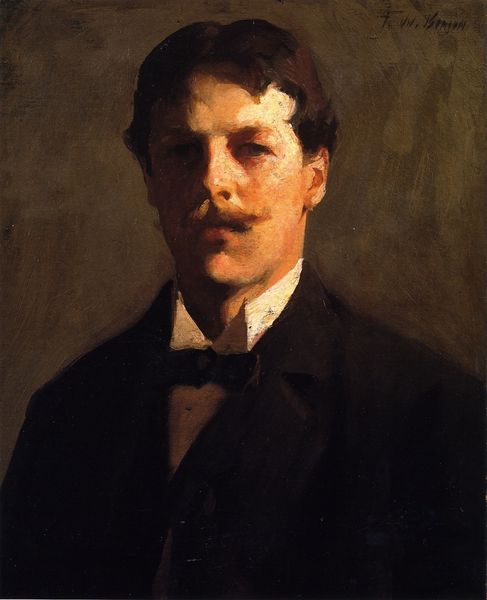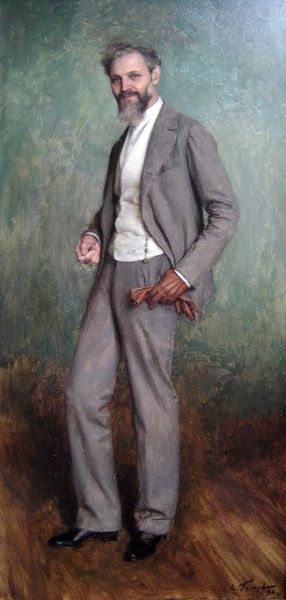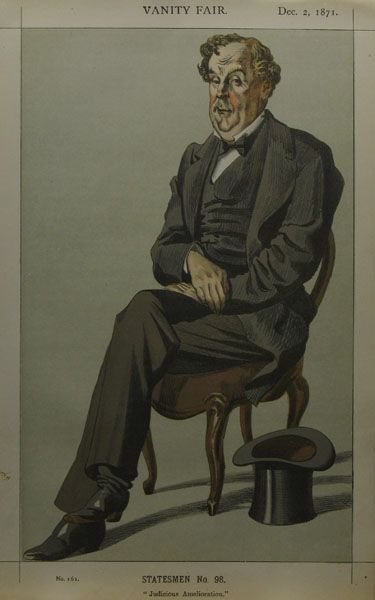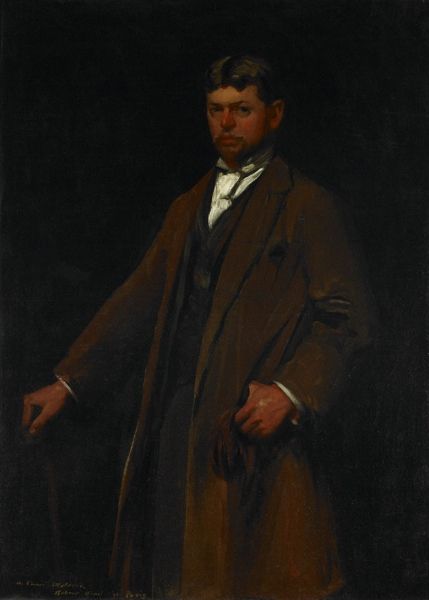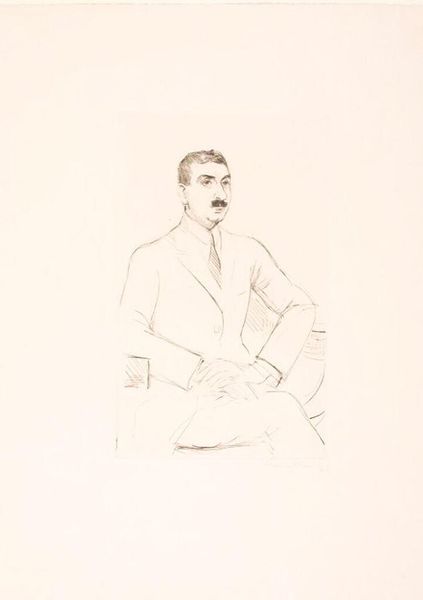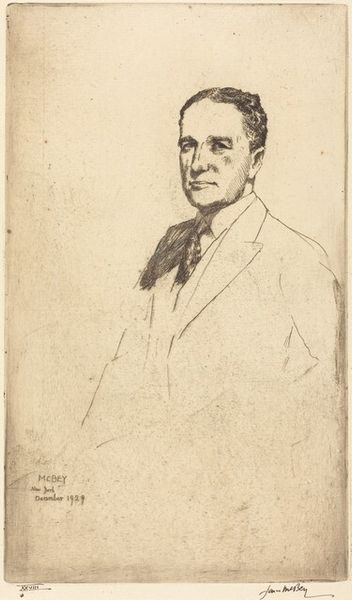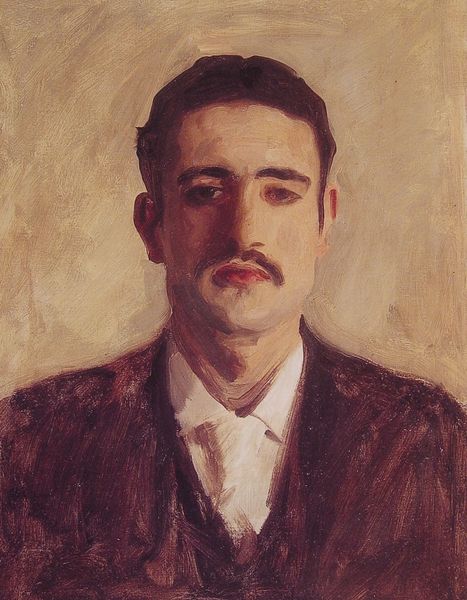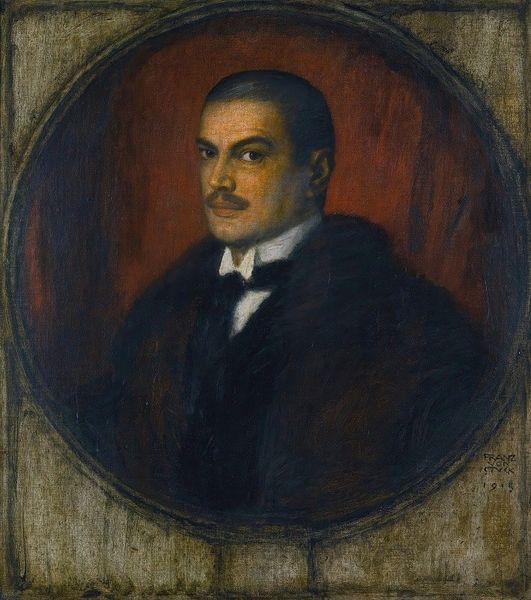
painting, oil-paint
#
portrait
#
painting
#
impressionism
#
oil-paint
#
intimism
#
symbolism
#
academic-art
#
realism
Copyright: Public domain
Editor: So, this is Eugene Carriere's "Pol Neveux," an oil painting, undated but likely from the late 19th century. It has a very intimate feel, almost dreamlike with its muted tones. How do you interpret this work? Curator: This portrait exists within a nexus of social and artistic change. Carriere's exploration of intimism places "Pol Neveux" within the emerging bourgeois identity. Look at the subject's attire, the careful arrangement of his tie, but rendered with an almost radical lack of detail. How does that inform the mood? Editor: I see what you mean. It's formal but still feels very personal, not like a state portrait at all. The colors almost drain the formality. Curator: Exactly! Now, consider the rise of photography and its impact on portraiture. Painters were no longer solely relied upon to capture likeness. This allowed them to explore subjective, internal experiences. Is Neveux gazing at us, or lost in thought? Editor: He definitely seems to be in his own world. It makes me wonder about his position within the Parisian art scene, if Carriere was making some statement about class. Curator: Perhaps. We might think about Carriere's broader interest in portraying subjects in a way that reveals the psychological depths beneath the surface of bourgeois identity. It seems like a dialogue on modernity itself! Editor: I never considered it that way. Thinking about how photography changed painting opens up so much more to explore. Curator: Absolutely, and these are discussions we should continually revisit. The art informs the social, and vice-versa. Editor: I agree; it has given me a new appreciation for how much context can influence how we see even a single portrait.
Comments
No comments
Be the first to comment and join the conversation on the ultimate creative platform.
